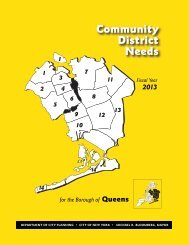Palm Oil Buyers Scorecard
WWF_Palm_Oil_Scorecard_2016
WWF_Palm_Oil_Scorecard_2016
Create successful ePaper yourself
Turn your PDF publications into a flip-book with our unique Google optimized e-Paper software.
68<br />
100<br />
ASSOCIATED<br />
BRITISH FOODS<br />
IMUSA DOLUPTATIOS<br />
What’s the<br />
VOLORE problem EICIIS IMUS with<br />
palm oil?<br />
A AUT ET AUT QUI.<br />
DAE COMNIS<br />
CORROVIDUNT AD<br />
PALM OIL: AN<br />
INTRODUCTION<br />
It’s a crucial commodity, but growing<br />
palm oil can lead to devastating<br />
deforestation and harm to wildlife,<br />
people and the climate.<br />
From margarine to lipstick, biscuits to candles, chocolate to laundry detergent, palm<br />
oil is found in an incredible range of everyday household products. It’s also used to fuel<br />
cars, as animal feed and in electricity generation.<br />
In fact, it’s the world’s most produced, consumed and traded vegetable oil, accounting<br />
for 38 per cent of global vegetable oil consumption in 2014/15. 1<br />
Ad mos ipsapic<br />
tatecatum aut<br />
quo que am<br />
<strong>Palm</strong> oil is not only extremely versatile – it’s also very productive, with a yield far<br />
greater than other vegetable oils from a far smaller land area. It creates a huge number<br />
of jobs, generates income for everyone from small farmers to massive global industries,<br />
and makes a big contribution to many local and national economies.<br />
All in all, it could be seen as a miracle plant.<br />
But there’s a downside. When palm oil is grown in the wrong place and in the wrong<br />
way, it can be devastating for people, wildlife, nature and the global climate.<br />
Deforestation,<br />
conflict and<br />
climate change<br />
<strong>Palm</strong> oil trees grow best in low-lying, wet, hot areas – exactly where tropical<br />
rainforests would grow naturally. Clearing for palm oil plantations has led to<br />
widespread destruction of rainforests, most significantly in Indonesia and Malaysia,<br />
where 86 per cent of the world’s palm oil is grown. 2<br />
Between 1990 and 2010 industrial palm oil plantations in these two countries grew by<br />
almost 10 million hectares – a rate of 7-8 per cent each year. More than two-fifths of<br />
that was planted on cleared forests, and the rest on land already cleared for farming. 3<br />
WHEN PALM OIL<br />
IS GROWN IN THE<br />
WRONG PLACE AND<br />
IN THE WRONG<br />
WAY, IT CAN BE<br />
DEVASTATING<br />
This has damaged the habitats of unique wildlife including orang-utans, elephants,<br />
rhinos and tigers, alongside a teeming array of other plants and animals. Many of these<br />
species find themselves critically endangered due to the destruction, clearing and<br />
fragmentation of their natural habitat.<br />
1 United States Department of Agriculture. August 2016. <strong>Oil</strong>seeds: World Markets and Trade.<br />
2 Ibid.<br />
3 RSPO. Reports from the Technical Panels of the 2nd Greenhouse Gas Working Group of the RSPO.<br />
7 WWF PALM OIL BUYERS SCORECARD 2016




